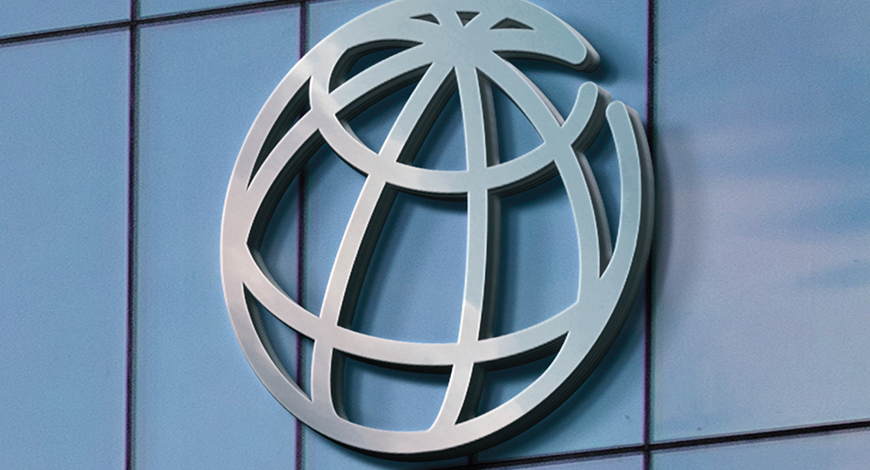Hospital Watch
Increasing resilience and preparedness of India’s health systems

The loans from the World Bank will go a long way in improving the public healthcare infrastructure across the country.
India’s performance in health has improved over time. According to World Bank estimates, India’s life expectancy – at 69.8 in 2020, up from 58 in 1990 – is higher than the average for the country’s income level. The under-five mortality rate (36 per 1000 live births), infant mortality rate (30 per 1000 live births), and maternal mortality ratio (103 per 100,000 live births) are all close to the average for India’s income level, reflecting significant achievements in access to skilled birth attendance, immunizations, and other priority services.
Despite these advances in the health of the Indian population, Covid-19 has underscored the need for revitalizing, reforming, and developing capacity for core public health functions.
The Government of India and the World Bank on March 3, 2023 signed two complementary loans of USD 500 million each to support and enhance India’s health sector development.

Auguste Tano Kouamé
Country Director, India
The World Bank
The two projects are supporting India’s decision to increase the resilience and preparedness of the country’s health systems against future pandemics.
The agreement was signed by Rajat Kumar Mishra, Additional Secretary, Department of Economic Affairs, Ministry of Finance on behalf of the Government of India and Auguste Tano Kouame, Country Director, India, World Bank. Through this combined financing of USD 1 billion, the Bank will support India’s flagship Pradhan Mantri-Ayushman Bharat Health Infrastructure Mission (PM-ABHIM), launched in October 2021, to improve the public healthcare infrastructure across the country.
The two projects aim to increase the resilience and preparedness of India’s health systems against future pandemics, and the loans have a final maturity of 18.5 years, including a grace period of five years.
Enhanced Health Service Delivery Program (EHSDP), in which the World Bank has provided a USD 500-million loan, will support the Indian government’s efforts to prioritize health service delivery in seven states – Andhra Pradesh, Kerala, Meghalaya, Odisha, Punjab, Tamil Nadu, and Uttar Pradesh. The total cost of the project is USD 1223 million and the closing date is June 30, 2027. Sheena Chhabra and Rifat Afifa Hasan are the team leaders.

Dr Shipra Thukral
Country General Manager
Origio India Pvt. Ltd. – A CooperSurgical Company
The dynamic Indian infertility landscape
With a population of over 1.3 billion, the median age in India is around 28 years according to the World Population Prospects 2020 by the United Nations. However, India’s Total Fertility Rate (TFR) has declined from 2.2 in 2015-16 to 2.0 in 2019-21 as per the National Family Health Survey -5 report.
India faces a huge burden of infertility which affects over 10-15 percent of married couples with only 1 percent of them actively seeking treatment.
The market is complex and multifaceted, with various factors influencing its double-digit growth including rising infertility rates, improving treatment success rates and relative increase of accessibility in the last decade. However, it is still largely underpenetrated owing to the lack of awareness, affordability and lack of insurance coverage. There is also a significant geographical skew in terms of treatment availability which is also contributed by the paucity of skilled IVF specialists and embryologists.
ART Rule 2022: A paradigm shift The Government of India released the ART Bill in December 2021 followed by the publication of the Assisted Reproductive Technology (ART) Rules, 2022 to regulate the functioning of ART clinics and banks.
The key objective is to bring in procedural standardization, documentation and ensure patient safety. The National Board shall monitor the Act’s implementation, treatment standardization and ensure the minimum standards of physical infrastructure and of qualification for the specialists and the workforce employed by clinics and banks.
The much-anticipated ART rule is expected to drive standardization, regulation, and clinical efficiency in an otherwise fragmented market.
Overall, the Indian infertility market is poised for significant growth in the coming years, driven by the rising infertility rates, increasing disposable incomes, stronger regulatory frameworks, increasing number of infertility clinics and market investments by global firms.
To meet the growing market demands, clinics today need solutions that improve outcomes and efficiency. With our holistic approach, state-of the -art products, knowledge sharing initiatives and collaborations, CooperSurgical Fertility Solutions aims to support clinics at every step of the ART cycle to drive best possible outcomes and change fertility care for generations to come.
Components
- Strengthen service delivery through a redesigned primary healthcare model, which includes improved household access to primary healthcare facilities, stronger links between each household and its primary care facility.
- Improve quality of care by supporting the National Quality Assurance Standards certification across health and wellness centers (HWCs).
- Transform health sector governance and accountability by strengthening implementation capacity, enhancing performance measurement and rewards at the district level, and fostering learning and knowledge exchanges among states.
Public Health Systems for Pandemic Preparedness Program (PHSPP) was extended the balance USD 500 million loan. The total cost of the project is USD 1260 million. Closing date is December 31, 2027. Suresh Kunhi Mohammed and Dinesh M. Nair are the team leaders.
Components
- Prepare India’s surveillance system to be ready to detect and report epidemics of potential international and ensure rapid response.
- Enhance India’s capacity to detect pathogens, including zoonotic diseases, to inform India’s bio-security response and commercialization of new technologies to prevent, detect, or treat infectious diseases.
- Strengthen coordination and build institutional capacity of core public health institutions.
Some other recently approved active health projects
The SRESTHA-G project is for the transformed health achievement in Gujarat. The total cost of the project is USD 12,144 million, and the commitment amount by the World Bank is USD 350 million. Closing date of the project is March 31, 2028, and it was approved on September 21, 2022. The implementing agency is the Government of Gujarat through the health and family welfare department (HFWD), and the team leaders are Rahul Pandey and Andrew Sunil Rajkumar.
Revolutionizing vaccine production through serum-free media

Shraddha V. Mane
Senior Manager- R&D and QC
Cell Biology, HiMedia Laboratories Pvt. Ltd
Serum-free media are gaining popularity in vaccine production due to their sustainable and cost-effective approach, contrary to traditional methods of using animal-derived serum. Serum-free medium uses plant-based or synthetic alternatives to support cell growth and vaccine production. It ultimately reduces costs, increases scalability and reproducibility.
Several vaccine manufacturers have already adopted the use of serum-free media in their production processes. Covishield, a Covid-19 vaccine containing recombinant SARS-CoV-2 spike (S) glycoprotein, has been manufactured using genetically modified HEK293 cells. The Serum Institute of India partnered with Novavax to produce a Covid-19 vaccine using serum-free media called Covovax. It has been approved for emergency use in several countries.
HiMedia has revolutionized the vaccine and virus production industry with its serum-free media product line: Cellin1TM, HEKin1TM, and BHKin1TM. These media products can significantly reduce the risks, costs, and variabilities associated with animal-derived components. They support commonly used cell lines: Vero, MDCK, HEK293, BHK-21, MDBK, and Chick Embryo fibroblasts.
By using HiMedia’s high-performance media, supplements, services, and support; vaccine manufacturers can accelerate their viral vector and vaccine development and streamline manufacturing. Our extensive portfolio of products and services can optimize workflow while minimizing risk and improving cost-effectiveness. Outsourcing the manufacturing of media formulation to HiMedia can ensure supply assurance, consistent quality, harmonized facilities, and global site equivalency.
The key objective is to bring in procedural standardization, documentation and ensure patient safety. The National Board shall monitor the Act’s implementation, treatment standardization and ensure the minimum standards of physical infrastructure and of qualification for the specialists and the workforce employed by clinics and banks.
We offer a comprehensive range of solutions that cover the entire vaccine production process, from discovery to large-scale commercial production. We are committed to collaborating closely with our customers and leveraging our unique capabilities, such as open architecture engineering and customization, to provide tailored solutions that deliver optimal outcomes for viral vaccine production.
The success of the vaccine manufacturing process relies heavily on efficiently scaling up production and ensuring safety, making performance medium technologies increasingly crucial. Serum-free media offer a promising solution to reduce the carbon footprint associated with vaccine production while addressing safety concerns related to potential contamination. The use of serum-free media in vaccine development offers benefits in terms of efficiency, safety, and ethical considerations for viral vaccine production.
The Meghalaya health systems strengthening project’s objective is to improve management capacity, quality and utilization of health services in Meghalaya. The total cost of the project is USD 50 million, and the commitment amount by the World Bank is USD 40 million. Closing date of the project is March 31, 2027, and it was approved on September 30, 2021. The implementing agency is the department of health and family welfare, Government of Meghalaya, and the team leader is Amith Nagaraj Bathula.
The Mizoram health systems strengthening project intends to strengthen the management capacity and quality of health services in Mizoram. The total cost of the project is USD 40 million with USD 32 million support coming from the World Bank. Closing date of the project is March 31, 2026, and it was approved on March 31, 2021. The implementing agency is the health and family welfare department, Government of Mizoram, and the team leader is Elina Pradhan.
Covid-19 emergency response and health systems preparedness project. The proposed project development objective is to prevent, detect, and respond to the threat posed by Covid-19 and strengthens national health systems for preparedness in India. The total cost of the project is USD 500. Closing date of the project is March 31, 2023, and it was approved on April 2, 2020. The implementing agency is ministry of health and family welfare. The team leaders are Dinesh M. Nair and Suresh Kunhi Mohammed.
The Andhra Pradesh health systems strengthening project’s objective is to improve the quality and responsiveness of public health services and increase access of the population to an expanded package of primary health services. The World Bank and the Central and the state government signed the loan agreement for amount USD 328 million support for the project. Closing date of the project is September 30, 2024. The implementing agency is department of health, medical and family welfare, Govt. of Andhra Pradesh. Amith Nagaraj Bathula is the team leader.
Technical advancement in fluid balance monitoring system

Amrith Rangan
CMO,
AKAS Infusions
Fluid balance monitoring is an essential part of healthcare management. Maintaining homeostasis and preventing adverse health outcomes depend on accurate monitoring of fluid levels in patients. Traditional fluid balance monitoring involves manual measurements, which can be time-consuming, labour-intensive, and prone to errors. However, recent technological advancements have led to the development of fluid balance monitors that offer accurate and efficient monitoring of fluid levels in patients. This essay briefs the technical advancements in fluid balance monitors and their impact on healthcare management.
One of the primary technological advancements in fluid balance monitors is the development of electronic monitoring systems. These systems use sensors to detect changes in fluid levels in patients through urine output and transmit this information to healthcare providers. Electronic monitoring systems have several advantages over traditional methods, including increased accuracy, real-time data analysis, and automatic alerts for healthcare providers.
Another technical advancement in fluid balance monitors is the use of smart pumps. Smart pumps use advanced algorithms to monitor and regulate fluid intake and output. They can also detect and prevent potential complications, such as fluid overload or dehydration. Smart pumps offer several benefits, including reduced nursing workload, increased patient safety, and improved patient outcomes.
Improved algorithms can make the system to analyse large amounts of patient data and identify trends and patterns that may not be immediately apparent to healthcare providers. AI can also predict potential complications and alert healthcare providers before they occur, allowing for early intervention and prevention.
In conclusion, technological advancements in fluid balance monitors have revolutionized healthcare management. Electronic monitoring systems, smart pumps, and improved algorithms offer accurate and efficient monitoring of fluid levels in patients, leading to improved patient outcomes, reduced nursing workload, and increased patient comfort. As technology continues to advance, it is likely that fluid balance monitoring will become even more advanced, leading to further improvements in healthcare management.
Toward such technical advancement, AKAS is working predominantly in introducing the smart pump, urine monitoring systes, AKAS UROMON and specialized standalone web application for fluid balance monitoring, AKAS FBM.
Components
- The first component, improve quality of care, aims to focus on improving the quality of care in community health centers (CHCs) and primary health centers (PHCs), which are often the first point of contact in the health system.
- The second component, improve responsiveness of public health services, aims to complement component-1 by focusing on making public health services more user-friendly and responsive to peoples’ feedback, which is a key element of quality.
- The third component, increase access to an expanded package of primary health services, aims to focus on expanding the package of services provided at PHCs and sub-centers (SCs) to include non-communicable disease (NCD) screening, risk-stratification, and management, in addition to strengthening the existing maternal and child health (MCH) services.
The National Tuberculosis Elimination Program (NTEP), previously known as Revised National Tuberculosis Control Program (RNTCP) aims to strategically reduce TB burden in India by 2025. The World Bank proposed a loan of USD 400 million for the project. Closing date of the project is June 30, 2024. The implementing agency is ministry of health and family welfare. The team leaders are Gyorgy Bela Fritsche and Di Dong.
The Tamil Nadu health system reform program project for India aims to improve quality of care, strengthen management of non-communicable diseases, and injuries, and reduce inequities in reproductive and child health services in Tamil Nadu. The World Bank proposed a loan of USD 287 million for the project. Closing date of the project is May 31, 2024. The implementing agency is the department of health and family welfare, Government of Tamil Nadu, department of finance. Team leaders are Dinesh M. Nair, Aarushi Bhatnagar, and Rahul Pandey.

Lynne Sherburne-Benz
South Asia Regional Director for Human Development,
The World Bank
The two programs leverage the unique strengths of both the Center and the States to support the development of more accessible, high-quality, and affordable health services. The strengthening of health systems, combined with attention to strong disease response, will improve preparedness and response to future disease outbreaks.
The Nagaland Health Project for India aims to improve health services and increase their utilization by communities in targeted locations in Nagaland. The total cost of the project is USD 60 million with USD 48 million support coming from the World Bank. Closing date of the project is December 31, 2023. The implementing agency is department of health and family welfare, Government of Nagaland. Amith Nagaraj Bathula is the team leader.
The Uttarakhand health systems project’s aim is improving access to health services in the State of Uttarakhand. The total cost of the project is USD 125 million with USD 100-million support coming from the World Bank. Closing date of the project is September 30, 2023. The implementing agency is department of medical health and family welfare, Government of Uttarakhand, and the team leaders are Sheena Chhabra and Rahul Pandey.
The loans from the World Bank will go a long way in improving the quality and comprehensiveness of health service delivery.












